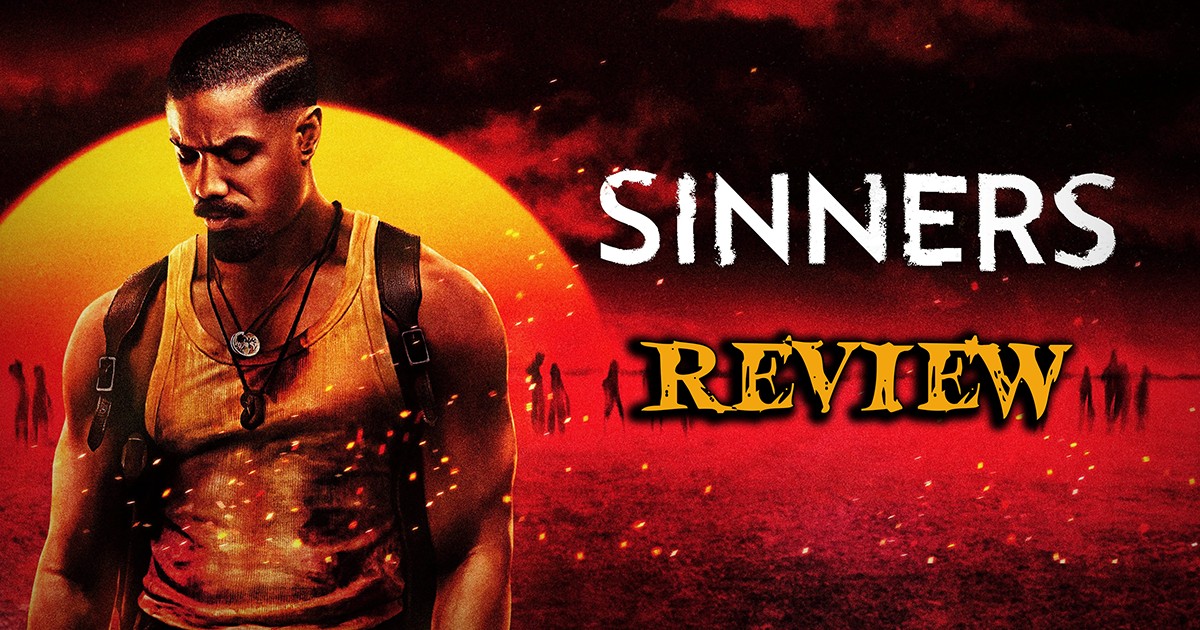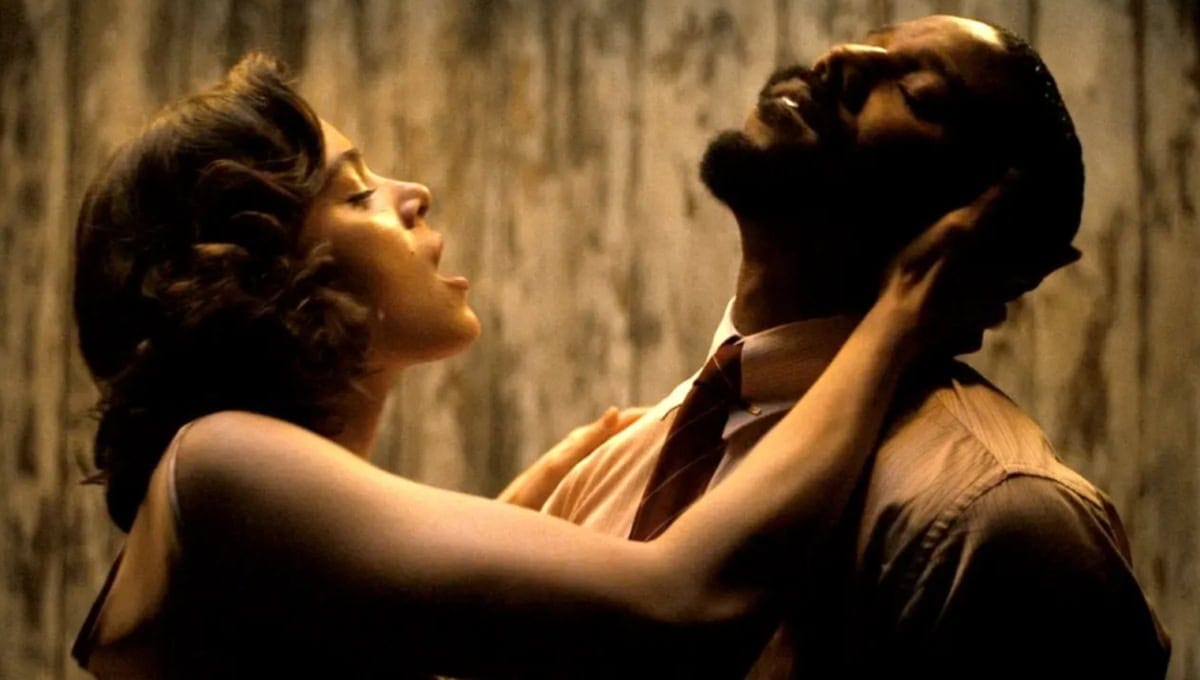‘Sinners’ Movie Review: A Crowning Achievement for Horror

Sinners as a title may discourage the evangelical audience from seeing the film. Yet, Ryan Coogler has more to say about spiritual warfare than most faith-based movies. His first breakthrough into horror touches on the deeply rooted religious backdrop of the 1930s Mississippi South, where people of color survived a racist landscape through resilience, grit, and the hope of an answered prayer.
Much like Nosferatu, Coogler infuses the Vampire lore with the ideas of evil spirits, souls, and demons. The difference is that the injection of music is an unintentional method of invoking these forces. The combination makes for a wholly original pathway into a vampire nightmare that feels like a spiritually moving celebration of music and faith in a horror film.
What is Ryan Coogler’s Sinners about?
Written and directed by Ryan Coogler, the film revolves around the happenings of two twin brothers gathering an ensemble of talents to establish a juke joint. The twin brothers, Smoke and Stack (played by Michael B. Jordan), move back home after doing business in Chicago. The script hints that their business dealings were criminal, with vague mentions of Al Capone. One of their recruits for the juke joint is Sammie (Miles Caton), a preacher’s son gifted with guitar and vocal talents. When Sammie sings, there is a soul to his melody where one can feel decades of pain echoing through his art. To elevate Sammie’s talents, the SmokeStack duo entices the talents of Delta Slim (Delroy Lindo), a withered old harmonica and piano player with a thick Mississippi roughness about him.
The performances are riveting, especially Jordan’s, who has the job of playing two different personas. Jordan embeds subtle differences in each twin, giving them small mannerisms. Smoke is more reckless and carefree, while Stack presents a steadier and more assertive demeanor. As they gather a team of talents to establish their business, the film comfortably takes a breath to bathe the atmosphere with character and backstory.
For example, Smoke unexpectedly encounters an old romantic partner named Mary (Hailee Steinfeld). The relationship brushes up against the topics of interracial relationships, and subtle inferences hint that Smoke keeps Mary at a distance to protect her. Steinfeld delivers some of her best work here, playing a character void of a filter but impassioned about what she wants.
Stack, on the other hand, returns to Annie (Wunmi Mosaku), a local spiritual healer whom Stack left behind after they both lost a child. Mosaku is the show stealer of Sinners, delivering a commanding supporting performance. Stack and Annie’s relationship feels authentic within minutes of their conversation. Within moments, the audience can feel the years of love and grief in both of them.
As the movie takes time to set the characters and the relationships, the juke joint comes together, the music ramps up, and the music shifts the energy in the room. In Coogler‘s vampire mythology, a song that can make one feel like the laws of time and physics are changing around them can feel overwhelmingly spiritual, but it might summon the wrong spirits. And their juke joint becomes the target of some strange passing drifters with suspect intentions.

A movie that redefines how Hollywood approaches horror
The creative choices behind Sinners feel similar to how Christopher Nolan approached The Dark Knight. For the most part, besides a few exceptions (Get Out, The Substance), the awards system does not engage with horror. The same was true for the comic book/superhero genre until 2008. Sinners feels like an auteur filmmaker making every attempt to craft a prestigious horror film. The movie stunningly employs the IMAX format, showcasing breathtaking shots of Mississippi environments.
Cinematographer Autumn Durald also invokes the Oppenheimer aesthetic with long, extended moments of character-driven dialogue given the large 70mm treatment. Durald and Coogler use a similar aspect ratio change seen in films like Mission Impossible: Ghost Protocol and Hunger Games: Catching Fire. The type of aspect ratio expansion that communicates to the audience that something monumental is about to take place.
Adding to the prestigious feel is the score by Ludwig Göransson (Oppenheimer). Göransson uses various instruments ranging from acoustic guitar and banjo cords, with shades of intoxicating violin orchestra for the emotional character moments of the film. Sinners oftentimes can feel like a musical as Coogler pushes big, rousing numbers of characters singing Mississippi blues. The songs range from stripped-down riffs to bass-thumping anthems that are capable of conjuring spirits. These moments demonstrate the bravery of Coogler‘s ambition. One scene, in particular, orchestrates a moment unlike anything produced in horror or big-budget entertainment. We will not give the moment away, but as a film reviewer, it was mesmerizing.
Ryan Coogler’s Sinners is a crowning achievement for horror
The horror influences range from films like The Lost Boys and Let the Right One In. For instance, vampire tales where the threat requires an invitation to enter the home. The film also includes subtle nods to John Carpenter’s The Thing, where characters question who remains human and who is pretending. Jack O’Connell portrays the film’s ferocious main antagonist, Remmick, as if he were an infected character from a Coen Brothers comedy. If there is a weakness in the movie, it stems from the lack of knowledge about Remmick. The film beautifully demonstrates his Irish roots and vaguely hints at a religious former life, but the movie provides minimal detail about his background. However, for the overall purposes of the story, his backstory is not a requirement.
Sinners owes some of its existence to the Robert Rodriguez film From Dusk Till Dawn. Similar to the 1996 vampire classic, Coogler takes a careful time to establish characters before throwing them into nightmarish peril. Almost to the point that moviegoers will forget they came to watch a vampire film. Even so, this is a screenplay dripping with ambitious ideas and decisions. Warner Bros. signals a lot of confidence in greenlighting a movie that combines a period piece, a borderline-sexy musical, and a gory horror film while allowing room for IMAX footage. It’s a hopeful sign for the industry. We need more films like this in theaters—movies that strive to redefine the limits of big-budget entertainment.
Overall, Sinners is unlike anything produced by the industry in years: a fully formed, original product with a budget and ambition to match. The film boldly discusses spiritual warfare through the power of music and vampire mythology and features some fascinating genre-bending elements. Ryan Coogler has delivered an exceptionally directed film that truly is a crowning achievement in the horror genre. A common complaint is that “Hollywood is too scared to make original entertainment.” Here is your chance to reward them for listening.
Are you excited to check out Sinners in theaters this weekend? Let us know on social media @mycosmiccircus or @TheCosmicCircus.com on Bluesky!
Check out: Kevin Bacon Explores Humanity and Horror in Prime Video’s The Bondsman


